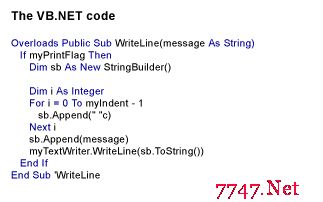從效率上看,是不是所有的.NET語言都擁有同樣的執行效率呢?這裡的答案可能使你驚訝。來看看Lamont Adams 從深層次代碼分析得到的結果。
VB.NET vs. C#, round 2: Pounding on performance
Dec 3, 2001
Lamont Adams
Authors Bio | E-Mail | Archive
If theres one property that all new technologies share as they pass through their infancy, its an excess of questions about them. Judging by the number of questions we received in response to our recent article "The three-million-programmer question: VB.NET or C#?," Microsofts new .NET development framework is no different.
Hence, we decided to launch a new Developer Republic column, .NET Answers. Aside from using this space to challenge English punctuation rules on a regular basis, I hope to answer your questions about .NET development. So if you have a question about Microsofts new development platform, send it my way. Ill take my best shot at it.
We received our inaugural question from member Vladimir Srecovic, from Yugoslavia, in response to the article referenced above. Vladimir has a question about performance.
C# performance benchmarking
Q: Ive seen reports that C#-produced IL (Intermediate Language) code runs faster than VB.NET-produced code. Is this true?
Vladimir Srecovic
 The VB.NET version is slightly longer than the C# version.
The VB.NET version is slightly longer than the C# version. The C# version takes seven lines of code.
The C# version takes seven lines of code.
I was surprised by what I discovered when I compared the resulting IL code: The VB.NET version was nine lines (and 9 KB) longer than the C# version. You can see the IL that the VB.NET compiler generated in Listing A; the C# compilers results appear in Listing B.
After comparing the code, I did a little quick and dirty benchmarking and found that over 12 trials, the C# version of FindType.exe, which uses reflection to list the methods belonging to a particular object, narrowly outperformed the VB.NET version. The latters best time was slightly slower than the formers worst time.
Whats going on here?
Im no expert on IL, and its currently poorly documented. But from looking at the IL code, it seems obvious that even though the two pieces of source are functionally identical and perform the same tasks in the same order, the resulting IL code is quite different:
Something strange is afoot
Although theres no smoking gun here, it does appear that the VB.NET compiler generated slightly less efficient code than its C# counterpart. That would seem to support the conclusion that, at least in this example, C# does in fact outperform equivalent VB.NET code. All this could change since we are still dealing with a beta. So stay tuned. There may be another chapter to this story yet.